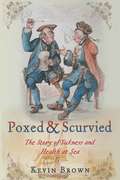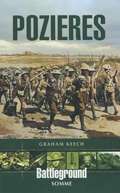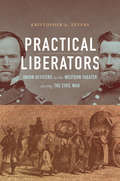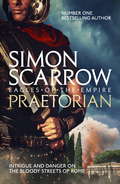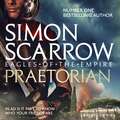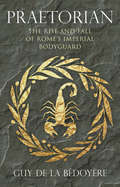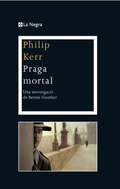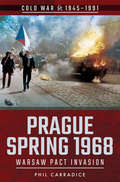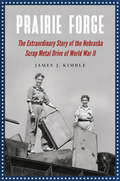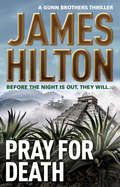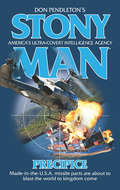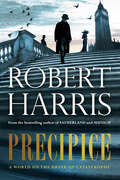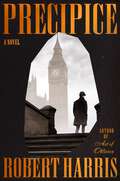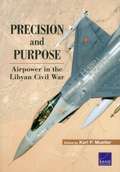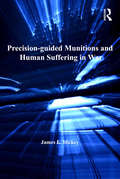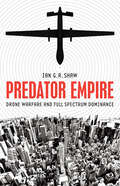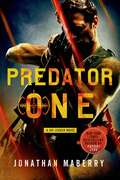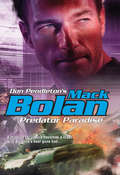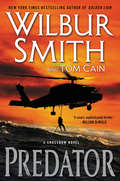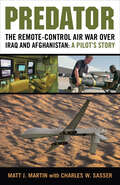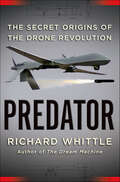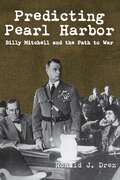- Table View
- List View
Poxed & Scurvied: The Story of Sickness and Health at Sea
by Kevin Brown&“A fascinating and wide-ranging history of health, hygiene, and the sea. This is a great narrative of an important but often hidden aspect of seafaring.&” —Ausmarine When European sailors began to explore the rest of the world, the problem of keeping healthy on such long voyages became acute. Malnourishment and crowded conditions bred disease, but they also carried epidemics that decimated the indigenous populations they encountered and brought back new diseases like syphilis. As navies developed, the well-being of crews became a dominant factor in the success of naval operations, so it is no surprise that the Royal Navy led the way in shipboard medical provision, and sponsored many of the advances in diet and hygiene which by the Napoleonic Wars gave its fleets a significant advantage over all its enemies. These improvements trickled down to the merchant service, but the book also looks at two particularly harsh maritime environments, the slave trade and emigrant ships, both of which required special medical arrangements. Eventually, the struggle to improve the fitness of seamen became a national concern, manifest in a series of far-reaching and sometimes bizarre public health measures, generally directed against the effects of drunkenness and the pox. In this way, as in many others, an attempt to address the specific needs of the seafarer developed wider implications for society as a whole. It also produced scientific breakthroughs that were a universal benefit, so far from being a narrow study of medicine at sea, this book provides a fascinating picture of social improvement. &“The topics are intriguing, the research is thorough, and the book is a captivating read.&” —Nautical Research Journal
Pozieres (Battleground Somme)
by Graham KeechThe village sits on top of the ridge that bears its name, a ridge that was an objective on the 1st July 1916. As it was, the whole position was not finally cleared until early September 1916 as German, Australian and British troops fought tenaciously over it.
Practical Liberators: Union Officers in the Western Theater during the Civil War (Civil War America)
by Kristopher A. TetersDuring the first fifteen months of the Civil War, the policies and attitudes of Union officers toward emancipation in the western theater were, at best, inconsistent and fraught with internal strains. But after Congress passed the Second Confiscation Act in 1862, army policy became mostly consistent in its support of liberating the slaves in general, in spite of Union army officers' differences of opinion. By 1863 and the final Emancipation Proclamation, the army had transformed into the key force for instituting emancipation in the West. However, Kristopher Teters argues that the guiding principles behind this development in attitudes and policy were a result of military necessity and pragmatic strategies, rather than an effort to enact racial equality.Through extensive research in the letters and diaries of western Union officers, Teters demonstrates how practical considerations drove both the attitudes and policies of Union officers regarding emancipation. Officers primarily embraced emancipation and the use of black soldiers because they believed both policies would help them win the war and save the Union, but their views on race actually changed very little. In the end, however, despite its practical bent, Teters argues, the Union army was instrumental in bringing freedom to the slaves.
Praetorian (Eagles of the Empire 11)
by Simon ScarrowIF YOU DON'T KNOW SIMON SCARROW, YOU DON'T KNOW ROME!PRAETORIAN is the gripping eleventh novel in Simon Scarrow's bestselling Eagles of the Empire series. Essential reading for fans of Bernard Cornwell and Conn Iggulden. 'A new book in Simon Scarrow's series about the Roman army is always a joy' The TimesAD 51. Legionaries Cato and Macro have forged a bond that has survived war, rebellion and torture. Yet nothing has prepared them for a daunting mission on the deadliest battlefield of all: the bloody streets of Rome.Traitors are threatening to plunge the Empire into bloody chaos and no one can be trusted. The Emperor has ordered Cato and Macro to go on a deadly mission, working undercover to root out the traitors before Rome tears itself apart.As the true scale of the corruption dawns, they realise they are facing terrifying odds. Two men against many, in a desperate race to save not only the Empire, but each other...
Praetorian (Eagles of the Empire 11): Cato & Macro: Book 11
by Simon ScarrowIF YOU DON'T KNOW SIMON SCARROW, YOU DON'T KNOW ROME!PRAETORIAN is the gripping eleventh novel in Simon Scarrow's bestselling Eagles of the Empire series. Essential reading for fans of Bernard Cornwell and Conn Iggulden. 'A new book in Simon Scarrow's series about the Roman army is always a joy' The TimesAD 51. Legionaries Cato and Macro have forged a bond that has survived war, rebellion and torture. Yet nothing has prepared them for a daunting mission on the deadliest battlefield of all: the bloody streets of Rome.Traitors are threatening to plunge the Empire into bloody chaos and no one can be trusted. The Emperor has ordered Cato and Macro to go on a deadly mission, working undercover to root out the traitors before Rome tears itself apart.As the true scale of the corruption dawns, they realise they are facing terrifying odds. Two men against many, in a desperate race to save not only the Empire, but each other...(P)2011 Headline Publishing Group Ltd
Praetorian: Cato & Macro: Book 11
by Simon ScarrowPRAETORIAN is the gripping eleventh novel in Simon Scarrow's bestselling Eagles of the Empire series. Essential reading for fans of Bernard Cornwell and Conn Iggulden.The city of Rome in AD 51 is a dangerous place. Treachery lurks on every corner, and a shadowy Republican movement, 'the Liberators', has spread its tentacles wide. It is feared that the heart of the latest plot lies in the ranks of the Praetorian Guard. Uncertain of whom he can trust, the Imperial Secretary Narcissus summons to Rome two courageous men guaranteed to be loyal to the grave: army veterans Prefect Cato and Centurion Macro.Tasked with infiltrating the Guard, Cato and Macro face a daunting test to win the trust of their fellow soldiers. No sooner have they begun to unearth the details of the Liberators' devious plan than disaster strikes: an old enemy who could identify them, with deadly consequences, makes an unexpected appearance. Now they face a race against time to save their own lives before they can unmask the mastermind behind the Liberators...
Praetorian: The Rise and Fall of Rome's Imperial Bodyguard
by Guy de la Bédoyère&“The dramatic story of the soldiers at the heart of the Roman empire . . . traces the history of the praetorians and the emperors they served.&”—Adrian Goldsworthy, author of Philip and Alexander: Kings and Conquerors Founded by Augustus around 27 B.C., the elite Praetorian Guard was tasked with the protection of the emperor and his family. As the centuries unfolded, however, Praetorian soldiers served not only as protectors and enforcers but also as powerful political players. Fiercely loyal to some emperors, they vied with others and ruthlessly toppled those who displeased them, including Caligula, Nero, Pertinax, and many more. Guy de la Bédoyère provides a compelling first full narrative history of the Praetorians, whose dangerous ambitions ceased only when Constantine permanently disbanded them. de la Bédoyère introduces Praetorians of all echelons, from prefects and messengers to artillery experts and executioners. He explores the delicate position of emperors for whom prestige and guile were the only defenses against bodyguards hungry for power. Folding fascinating details into a broad assessment of the Praetorian era, the author sheds new light on the wielding of power in the greatest of the ancient world&’s empires. &“Any future researcher into the subject will certainly begin here.&”—The Times (London) &“A lively and up-to-date history of the Praetorian Guard, the anti-coup divisions of the Roman emperors from Augustus to Constantine. De la Bédoyère tells their story with clarity and panache, and his book can be most warmly recommended both to aspiring tyrants and the ordinary armchair historian.&”—The Sunday Times &“Fast paced and engaging.&”—The Sunday Telegraph &“A definitive and highly readable account.&”—Tom Holland, author of Rubicon: The Last Years of the Roman Republic
Praga mortal: UNA INVESTIGACIÓ DE BERNIE GUNTHER
by Philip KerrPraga mortal és la vuitena i darrera entrega de la sèrie de més èxit de Philip Kerr, ambientada a l'Alemanya nazi. Una obra a cavall de la novel·la negra i la històrica que fascinarà els lectors de tots els gèneres. Berlín, setembre del 1941. El detectiu Bernie Gunther ha de deixar totes les seves ocupacions a Homicidis per un assumpte de més envergadura: passar un cap de setmana a la casa de camp que té a Praga el seu antic cap a l’SD: ni més ni menys que Reinhard Heydrich, el nou Reichsprotector de Bohèmia i Moràvia. Però el que al principi es presenta com una reunió soporífera en companyia dels oficials més detestables de les SS i l’SD, es converteix de sobte en una prova de foc per a la reputació de Gunther com a investigador quan descobreixen un cadàver en una habitació tancada per dins. I si bé el que hi ha en joc podria arribar a tenir conseqüències a les més altes esferes del Reich, sense cap menade dubte posarà en un seriós perill la vida del detectiu.
Prague Spring 1968: Warsaw Pact Invasion (Cold War, 1945–1991)
by Phil CarradiceA historian&’s overview of Czechoslovakia&’s Alexander Dubček, the Prague Spring of 1968, and the Warsaw Pact Invasion. Cold War nadir: January 1968 and in Czechoslovakia, the new Communist Party leader, Alexander Dubcek, has made it clear that this is the opportunity to loosen the Soviet stranglehold on the country. As the Prague winter slowly eases into a Prague spring, it really does seem as if Dubček has judged it right. Reforms in oppressive censorship laws, improved housing, a lessening of totalitarian oppression, Dubček promises and delivers on it all. The new regime in Czechoslovakia does seek to destroy communism but it does want to choose its own political destiny. And then, on the night of 20/21 August, the Prague Spring is crushed by the Warsaw Pact invasion: 200,000 Communist troops, mostly Soviet but also Polish and East German, flood the country. The resulting protests and rallies against the invasion, mostly by young people, are violent and bloody. Hundreds die in clashes; self-immolation, in public and before the eyes of the world, brings home the horror and the depth of feeling in the Czech people. It is the end of the Prague Spring, the reformation of Czechoslovakia having ended in ruins. But despite the brutal crushing of Czech hopes and dreams, the events of 1968 lay the foundations for future change. It will take another two decades but it is, ultimately, where the unraveling of the Communist bloc begins.
Prairie Forge: The Extraordinary Story of the Nebraska Scrap Metal Drive of World War II
by James J. KimbleIn the wake of Pearl Harbor, President Roosevelt called for the largest arms buildup in our nation's history. A shortage of steel, however, quickly slowed the program’s momentum, and arms production fell dangerously behind schedule. The country needed scrap metal. Henry Doorly, publisher of the Omaha World-Herald, had the solution. Prairie Forge tells the story of the great Nebraska scrap drive of 1942—a campaign that swept the nation and yielded five million tons of scrap metal, literally salvaging the war effort itself. James J. Kimble chronicles Doorly’s conception of a fierce competition pitting county against county, business against business, and, in schools across the state, class against class—inspiring Nebraskans to gather 67,000 tons of scrap metal in only three weeks. This astounding feat provided the template for a national drive. A tale of plowshares turned into arms, Prairie Forge gives the first full account of how home became home front for so many civilians.
Pray for Death (A Gunn Brothers Thriller)
by James HiltonA heart pounding thriller for fans of Lee Child, Matt Hilton and James Hilton.EVEN PRAYER WON'T SAVE THEM NOWBrothers Danny and Clay Gunn were brought up an ocean apart. Both served in the military, and both know how to kill, taking work as private military contractors and freelance "fixers".Celine Chavez is the closest thing to a daughter that Clay Gunn has. But now she has disappeared while vacationing in Mexico. Clay and his brother Danny must venture into the ultra-violent criminal underworld to bring her home. From the bright lights of Cancún to a living nightmare in the wildest jungles of the Yucatán, the Gunn brothers face the direst of enemies yet.One thing is for sure: if they survive, the Gunn brothers will never be the same again.
Pre-Deployment Stress, Mental Health, and Help-Seeking Behaviors Among Marines
by Jeffrey Garnett Carrie M. Farmer Christine Anne Vaughan Robin M. WeinickAs part of an evaluation of the Marine Corps Operational Stress Control and Readiness (OSCAR) program, this report describes the methods and findings of a large survey of marines who were preparing for a deployment to Iraq or Afghanistan in 2010 or 2011. The results are among the first to shed light on the pre-deployment mental health status of marines, as well as the social resources they draw on when coping with stress and their attitudes about seeking help for stress-related problems.
PreView
by Alanna CocaArchitect Ryann Phillips lives a normal life-except for her psychic dreams. Few of her premonitions make sense, or even cause her to lose sleep, until she dreams about a vicious murder and is compelled to warn the would-be victim. Attorney Trevor Kearney doesn't believe it when Ryann claims his client's ex wants her dead. Nevertheless, he's intrigued by her ability to hold up to his questioning, and by the unexpected attraction he feels for the beautiful woman. He reluctantly agrees to work together to keep his client safe...and to spend more time with Ryann. Ryann hasn't met anyone who infuriates and arouses her like Trevor does. He may question her psychic visions, but there's no doubting their sexual chemistry. As they grow closer, their relationship could put them in the path of a killer and inadvertently set the course of events in motion...Refreshed version of PREJA VU, newly revised by author.53,000 words
Precipice
by Don PendletonSTONY MAN Acting under orders of the President, the members of the Stony Man team are unsung heroes that only a handful of people know exist. Whether the mission is taking down terrorists or halting the shipment of illegal weapons, the covert team doesn't stop until it's over. Elite military warriors, they have only one goal: fight terror anywhere and anytime.BRINK OF MADNESSWhen Phoenix Force raids a North Korea drug ship, interdicting the latest in the rogue nation's terrorist schemes, it finds more than Stony Man Farm's personnel bargained for. The floating drug lab bears a cargo much deadlier than heroin: ICBM parts. The missile parts are traceable to an American manufacturer and would, coupled with warheads, give North Korea the ability to hit an alarming number of other countries, to say nothing of eradicating South Korea's capital.
Precipice
by Robert HarrisA WORLD ON THE BRINK OF WAR. AN AFFAIR ON THE EDGE OF SCANDAL.A spellbinding novel of passion, intrigue and betrayal set in England in the weeks leading to the Great War. From the bestselling author of Conclave, Act of Oblivion, Fatherland and Munich.Summer 1914.In London, 26-year-old Venetia Stanley – aristocratic, intelligent, bored, reckless – is having a love affair with the Prime Minister, H. H. Asquith, a man more than twice her age. He writes to her obsessively, sharing the most sensitive matters of state. As Asquith reluctantly leads the country into war with Germany, a young intelligence officer is assigned to investigate a leak of top-secret documents. Suddenly what was a sexual intrigue becomes a matter of national security that could topple the British government – and will alter the course of political history.Seamlessly weaving fact and fiction in a way that no writer does better, Precipice is the thrilling new novel from Robert Harris.
Precipice: A Novel
by Robert Harris“Robert Harris is, simply put, masterful.”—Karin SlaughterA spellbinding novel of passion, intrigue, and betrayal set in England in the months leading to the Great War from the bestselling author of Act of Oblivion, Fatherland, The Ghostwriter, and Munich.Summer 1914. A world on the brink of catastrophe.In London, twenty-six-year-old Venetia Stanley—aristocratic, clever, bored, reckless—is part of a fast group of upper-crust bohemians and socialites known as “The Coterie.” She’s also engaged in a clandestine love affair with the Prime Minister, H. H. Asquith, a man more than twice her age. He writes to her obsessively, sharing the most sensitive matters of state.As Asquith reluctantly leads the country into war with Germany, a young intelligence officer with Scotland Yard is assigned to investigate a leak of top-secret documents. Suddenly, what was a sexual intrigue becomes a matter of national security that could topple the British government—and will alter the course of political history.An unrivaled master of seamlessly weaving fact and fiction, Precipice is another electrifying thriller from the brilliant imagination of Robert Harris.
Precision and Purpose: Airpower in the Libyan Civil War
by Karl P. MuellerA team of U. S. and international experts assesses the impact of various nations' airpower efforts during the 2011 conflict in Libya, including NATO allies and non-NATO partners, and how their experiences offer guidance for future conflicts. In addition to the roles played by the United States, Britain and France, it examines the efforts of Italy, Canada, Belgium, Denmark, the Netherlands, Norway, Sweden, Qatar, the UAE, and the Libyan rebels.
Precision-guided Munitions and Human Suffering in War (Military and Defence Ethics)
by James E. HickeyJames Hickey proceeds from the premise that throughout history, humans have demonstrated a proclivity for using violence against one another as a means to achieve an end, means enabled, in many respects, by the technologies available at the time. Advancing technology has often been a prime enabler of ever-increasing levels of violence and attendant human suffering. At a few junctures in history, however, certain technologies have seemingly provided the armed forces that possess them the ability to fight wars with decreasing levels of violence and suffering. Today, precision-guided munitions (PGMs) with their high degree of discrimination and accuracy again hold such promise. This book seeks to answer the question: Do PGMs mitigate suffering in war, and have these weapons changed the way decisions regarding war and peace have been made? Answering this question helps us understand possible shifts in emphasis in modern warfare, both in terms of methods employed and of the greater concern placed on limiting human suffering during conflict. This book will help students of ethics, just war and military history and senior military and civilian leaders to understand the possible outcomes and wider implications of their strategic choices to use such technology.
Predator Empire: Drone Warfare and Full Spectrum Dominance
by Ian G. ShawWhat does it mean for human beings to exist in an era of dronified state violence? How can we understand the rise of robotic systems of power and domination? Focusing on U.S. drone warfare and its broader implications as no other book has to date, Predator Empire argues that we are witnessing a transition from a labor-intensive &“American empire&” to a machine-intensive &“Predator Empire.&” Moving from the Vietnam War to the War on Terror and beyond, Ian G. R. Shaw reveals how changes in military strategy, domestic policing, and state surveillance have come together to enclose our planet in a robotic system of control. The rise of drones presents a series of &“existential crises,&” he suggests, that are reengineering not only spaces of violence but also the character of the modern state. Positioning drone warfare as part of a much longer project to watch and enclose the human species, he shows that for decades—centuries even—human existence has slowly but surely been brought within the artificial worlds of &“technological civilization.&” Instead of incarcerating us in prisons or colonizing territory directly, the Predator Empire locks us inside a worldwide system of electromagnetic enclosure—in which democratic ideals give way to a system of totalitarian control, a machinic &“rule by Nobody.&” As accessibly written as it is theoretically ambitious, Predator Empire provides up-to-date information about U.S. drone warfare, as well as an in-depth history of the rise of drones.
Predator One (Joe Ledger #7)
by Jonathan MaberryOn opening day of the new baseball season a small model-kit airplane flies down from the stands and buzzes the mound, where a decorated veteran pilot is about to throw out the first ball. The toy plane is the exact replica of the one flown by the war hero. Everyone laughs, thinking it's a prank or a publicity stunt. Until it explodes, killing dozens. <p><p> Seconds later a swarm of killer drones descend upon the picnicked crowd, each one carrying a powerful bomb. All across the country artificial intelligence drive systems in cars, commuter trains and even fighter planes go out of control. The death toll soars as the machines we depend upon every day are turned into engines of destruction. <p><p> Joe Ledger and the Department of Military Sciences go on the hunt for whoever is controlling these machines, but the every step of the way they are met with traps and shocks that strike to the very heart of the DMS. No one is safe. Nowhere is safe. Enemies old and new rise as America burns. Joe Ledger and his team are back in Jonathan Maberry's seventh book in the series. <p><p> They begin a desperate search for the secret to this new technology and the madmen behind it. But before they can close in the enemy virus infects Air Force One. The president is trapped aboard as the jet heads toward the heart of New York City. It has become PREDATOR ONE.
Predator Paradise (SuperBolan #98)
by Don PendletonSPOILS OF WAR The action smacks of black ops, but Mack Bolan is dealing himself into the game at Stony Man's bidding, riding shotgun with Cobra Force Twelve on a mission to round up the worst of the worst, from Africa through the Middle East. It is a quick and dirty sweep of the most wanted of global terror. But Bolan's gut tells him something is wrong from the start, and that Colonel Ben Collins and his force of hardcases are into more than American justice--something that smells like blood and betrayal. Playing it out long enough to separate the truth from the lies, the Stony warrior wades through the slaughter zones, hunting the enemy and watching his back. If some or all of Cobra Force turn out to be vicious, merciless predators hiding behind the Stars and Stripes, they'll earn the sword of justice cuts both ways.
Predator: A Crossbow Novel
by Wilbur SmithFormer operative Major Hector Cross must face off against a pair of lethal enemies and prevent an international catastrophe in this gripping contemporary adventure-thriller--perfect for fans of Clive Cussler, Ted Bell, and Vince Flynn--from the legendary worldwide bestselling author of Desert God and Golden Lion.One of the most formidable fighters in the world, ex-SAS warrior and former private security consultant Major Hector Cross has survived explosive tangles with depraved enemies--warlords, pirates, and arms dealers--from the Middle East to the heart of Africa. Now, Cross must take the law into his own hands once again to stop a vengeful old enemy who has resurfaced--and hunt down a deadly new nemesis in pursuit of global domination.Co-written with internationally bestselling author Tom Cain, this exciting tale, filled with knife-edge tension, cunning global intrigue, rip-roaring action, and breathtaking adventure, demonstrates the extraordinary vision and talent of a writer with a gift for consistently delivering nonstop entertainment.
Predator: The Remote-Control Air War Over Iraq and Afghanistan: A Pilot's Story
by Charles W. Sasser Matt J. MartinThe Nintendo generation has taken to the battlefields of Iraq and Afghanistan where remotely controlled aircraft are killing America¹s enemies and saving American lives.Matt J. Martin is considered a "top gun" in the world of unmanned aerial vehicles (UAVs). For nearly four years, he has flown hundreds of missions on two warfronts in a new kind of combat that, until recently, was largely classified Top Secret. He and his fellow Predator pilots have been actively involved in virtually every facet of the War on Terror in Iraq and Afghanistan: tracking Osama bin Laden; capturing top al-Qaeda leader al-Zarqawi; fighting with the U.S. Marines in Fallujah; and rescuing aid workers kidnapped in Afghanistan by the Taliban.This is Matt J. Martin's story and that of his aircraft, the 27-foot long Predator.
Predator: The Secret Origins of the Drone Revolution
by Richard WhittleThe untold story of the birth of the Predator drone, a wonder weapon that transformed the American military, reshaped modern warfare, and sparked a revolution in aviationThe creation of the first weapon in history whose operators can stalk and kill an enemy on the other side of the globe was far more than clever engineering. As Richard Whittle shows in Predator, it was one of the most profound developments in the history of military and aerospace technology.Once considered fragile toys, drones were long thought to be of limited utility. The Predator itself was resisted at nearly every turn by the military establishment, but a few iconoclasts refused to see this new technology smothered at birth. The remarkable cast of characters responsible for developing the Predator includes a former Israeli inventor who turned his Los Angeles garage into a drone laboratory, two billionaire brothers marketing a futuristic weapon to help combat Communism, a pair of fighter pilots willing to buck their white-scarf fraternity, a cunning Pentagon operator nicknamed "Snake," and a secretive Air Force organization known as Big Safari. When an Air Force team unleashed the first lethal drone strikes in 2001 for the CIA, the military's view of drones changed nearly overnight.Based on five years of research and hundreds of interviews, Predator reveals the dramatic inside story of the creation of a revolutionary weapon that forever changed the way we wage war and opened the door to a new age in aviation.
Predicting Pearl Harbor: Billy Mitchell and the Path to War
by Ronald DrezThe story of &“a military aviation pioneer and patriot who tried—and failed—to warn [about] an attack on Pearl Harbor almost two decades before it occurred&” (San Antonio Express-News). Ever since Commodore Matthew Perry&’s 1853 voyage into Japanese waters, the United States and Japan had been on a collision course. Gen. Billy Mitchell recognized the signs and foresaw the eventual showdown between the two nations—eighteen years before the tragedy of Pearl Harbor. When he traveled to Japan disguised as a tourist in 1924, what he found was a nation that had embraced a philosophy of isolationism. Japan had defeated China and Russia on the battlefield decades before, due in part to a veil of secrecy. China and Russia were nearly unable to carry out espionage missions against their enemy. Yet Mitchell&’s predictions were dismissed out of hand, and his attempts to have his theories taken seriously led to scorn and a subsequent court martialing. In this book, primary-source documents, memoirs, and firsthand testimonies deliver an exhaustive background to Mitchell&’s prescient reports. Historian Ronald J. Drez presents an engaging account of the life and career of the man who not only foresaw the event that brought the United States into the Second World War, but also shaped the future of military air power—finally giving credence to the man called the &“Cassandra General.&”
